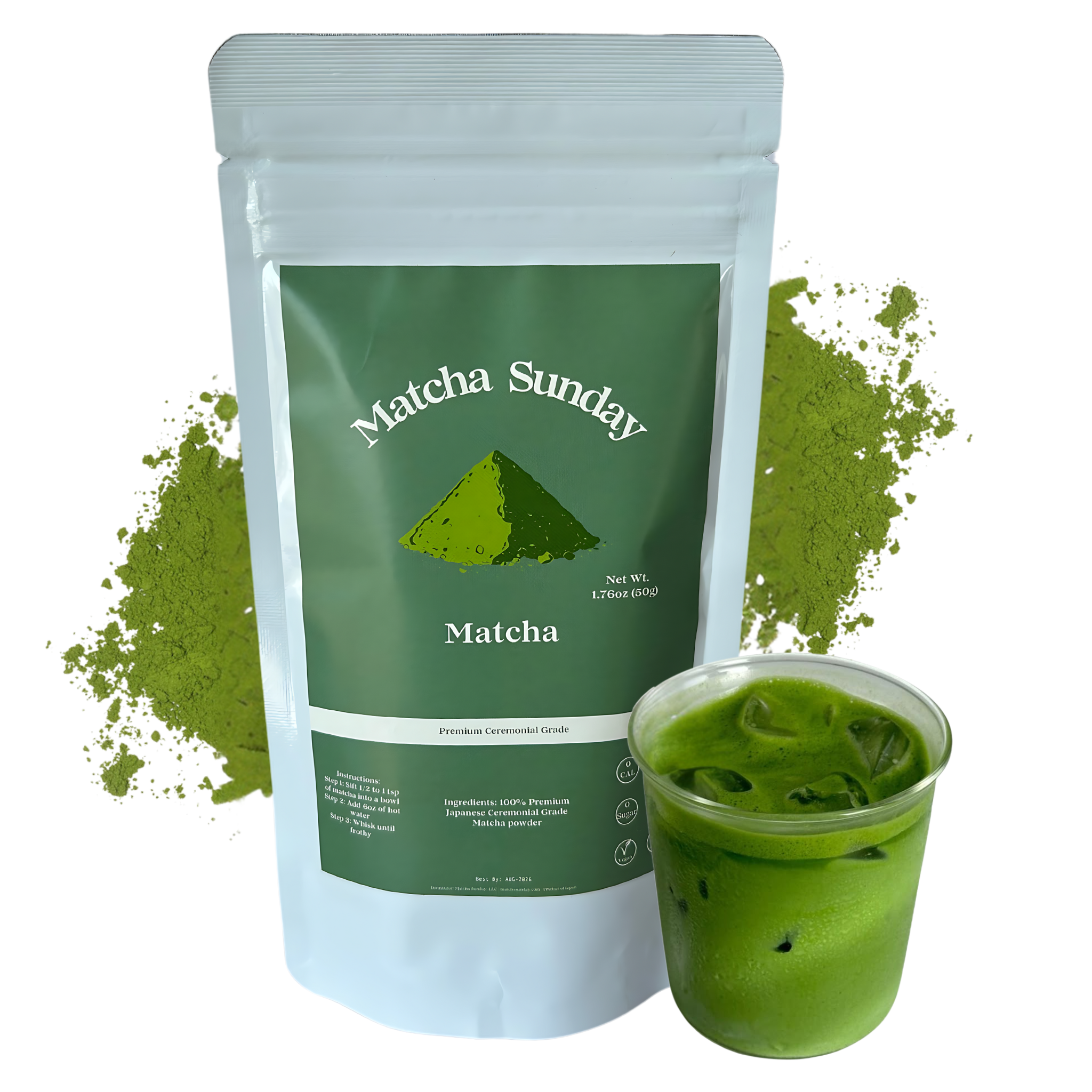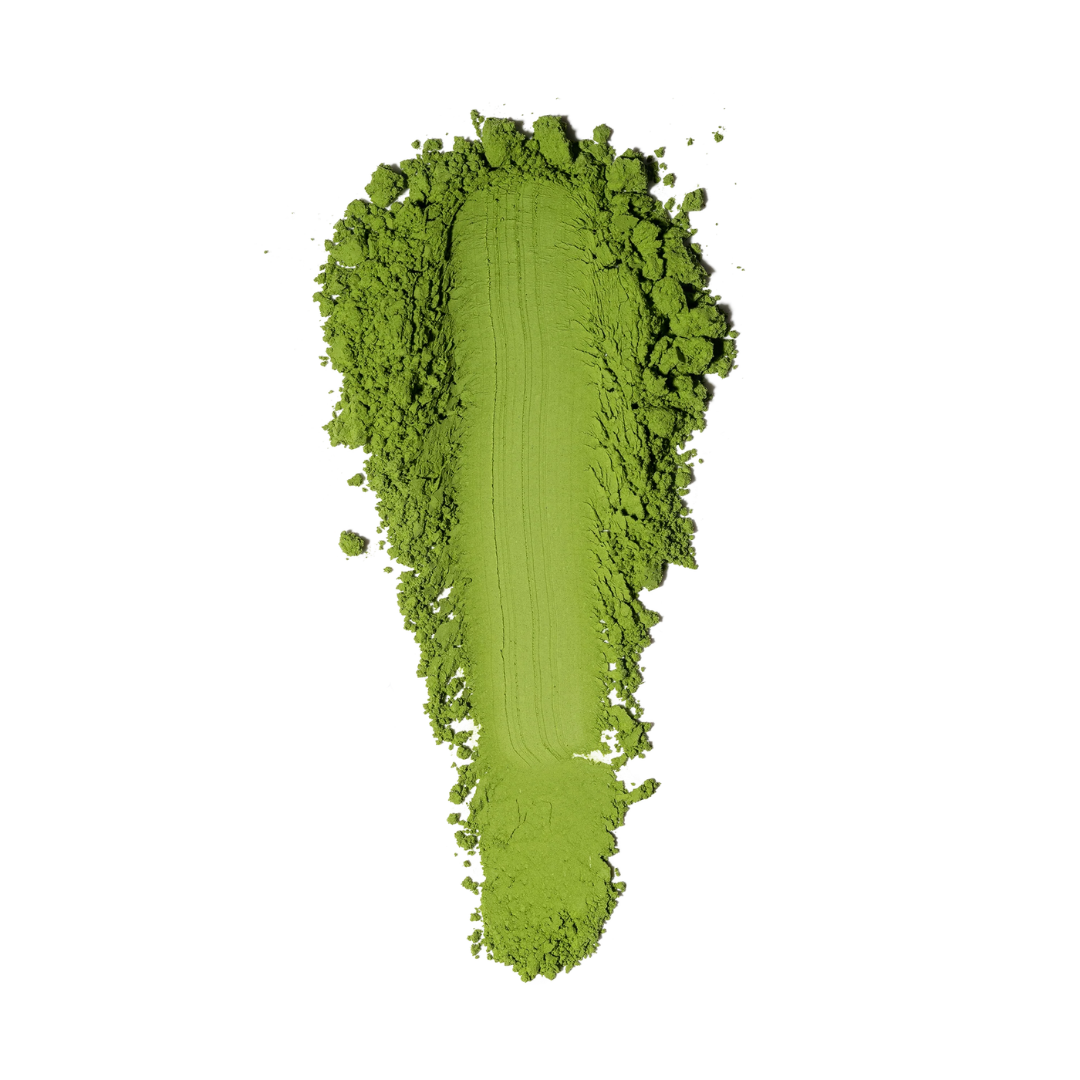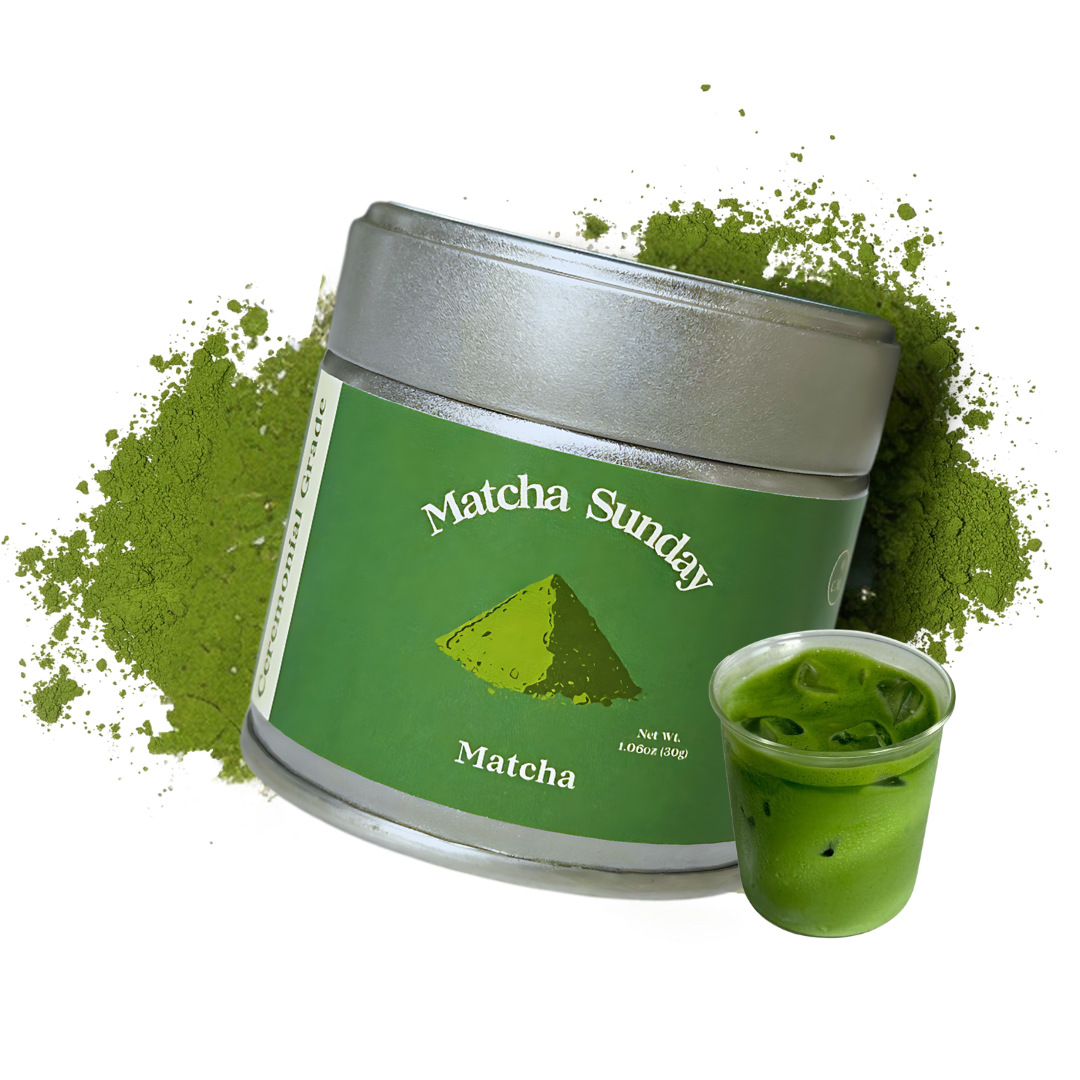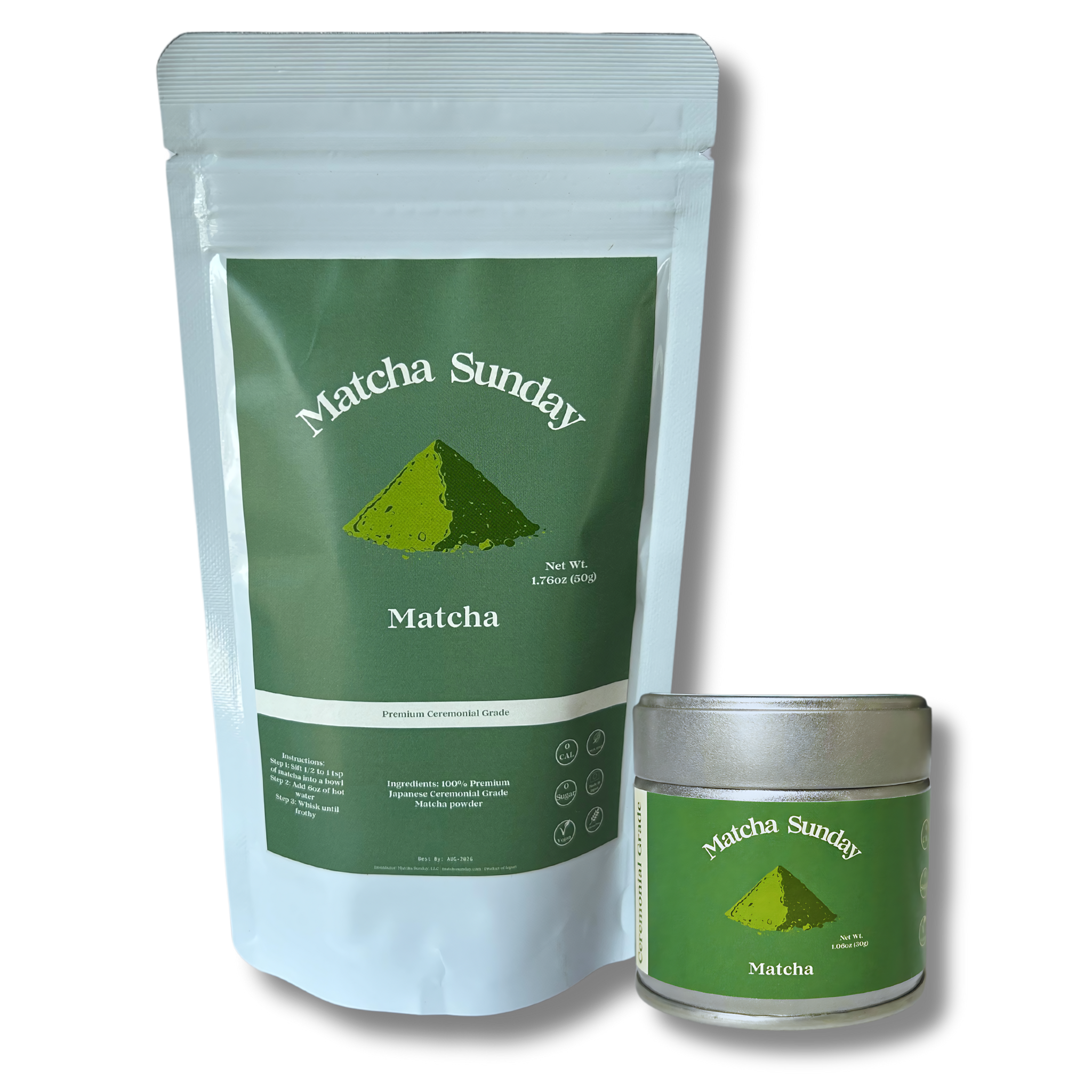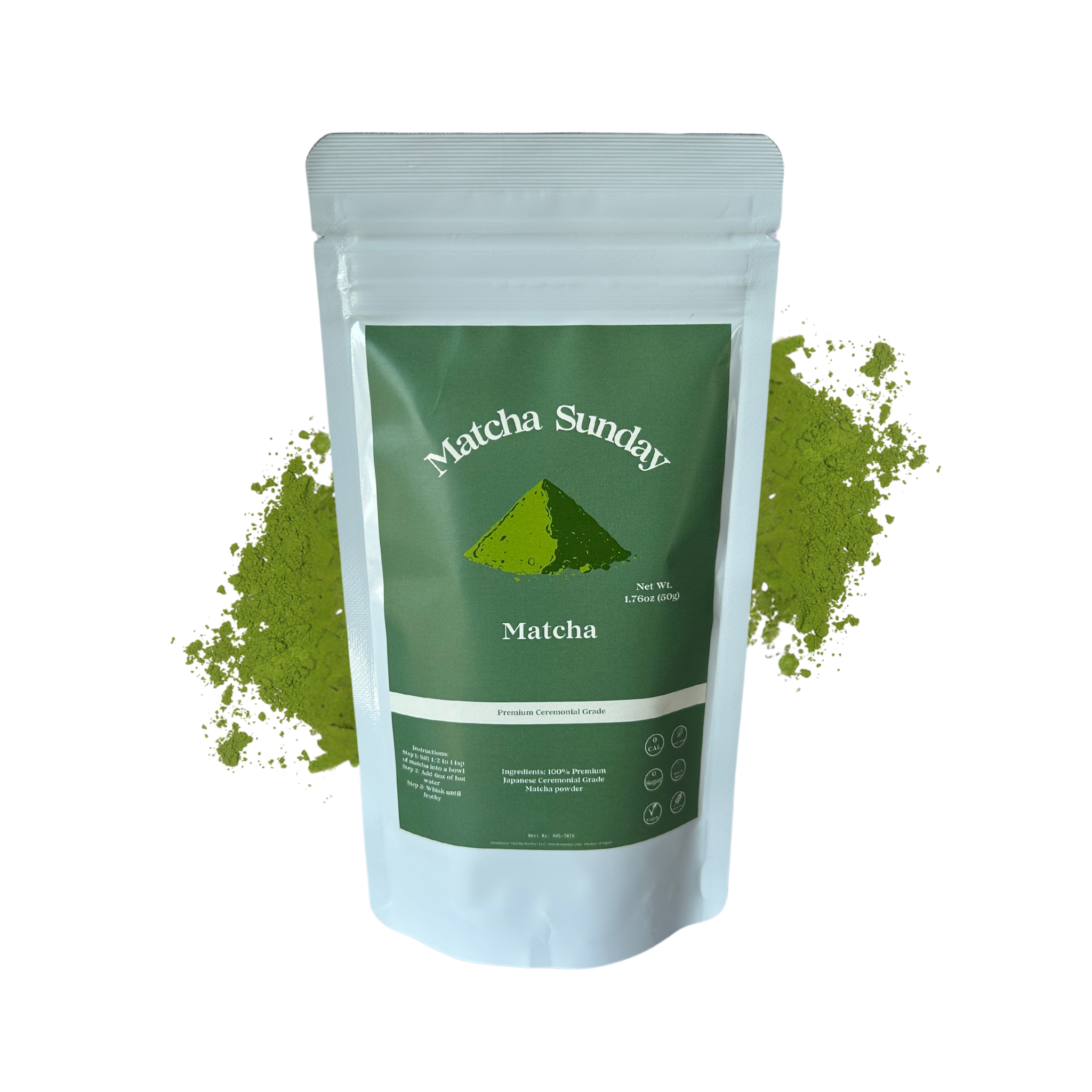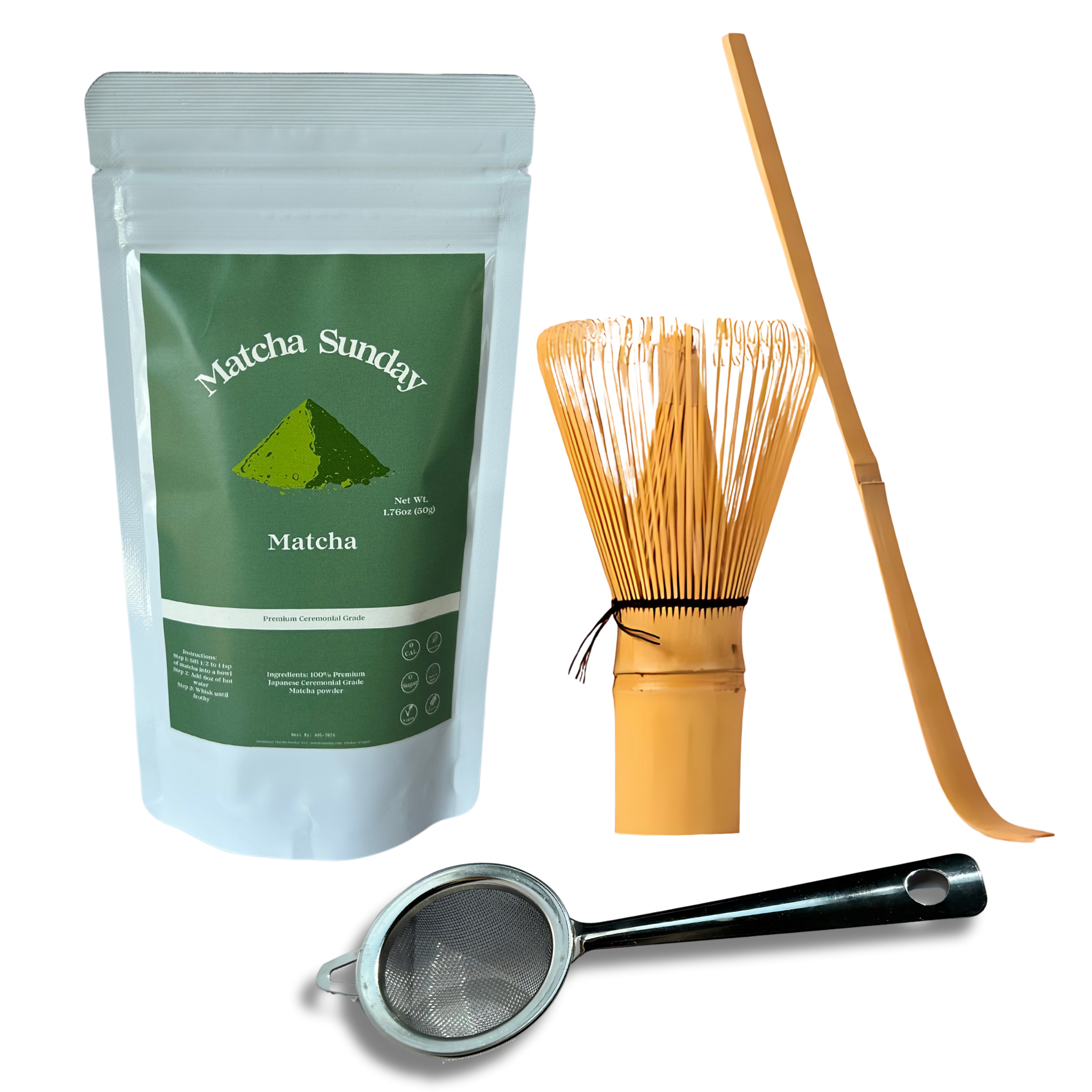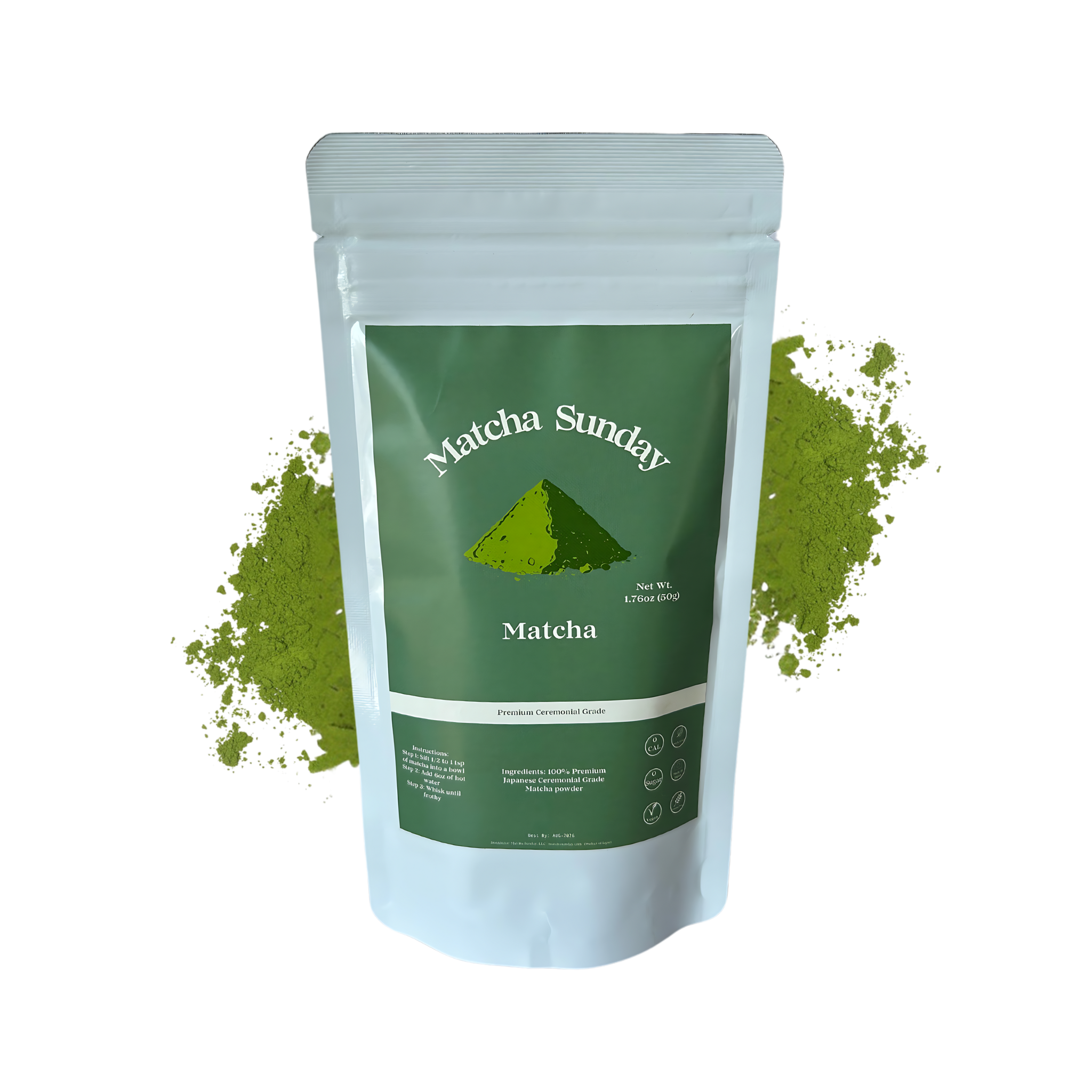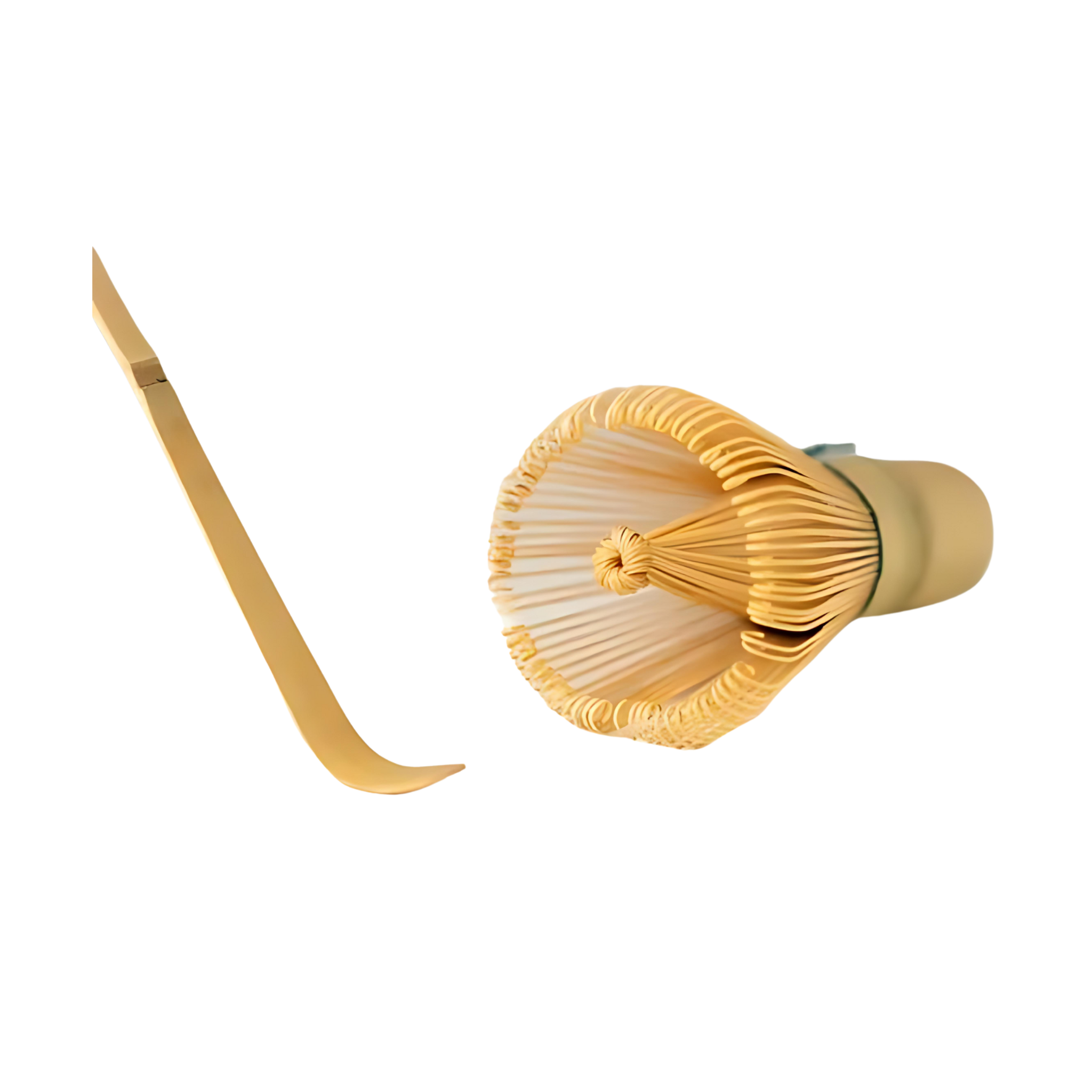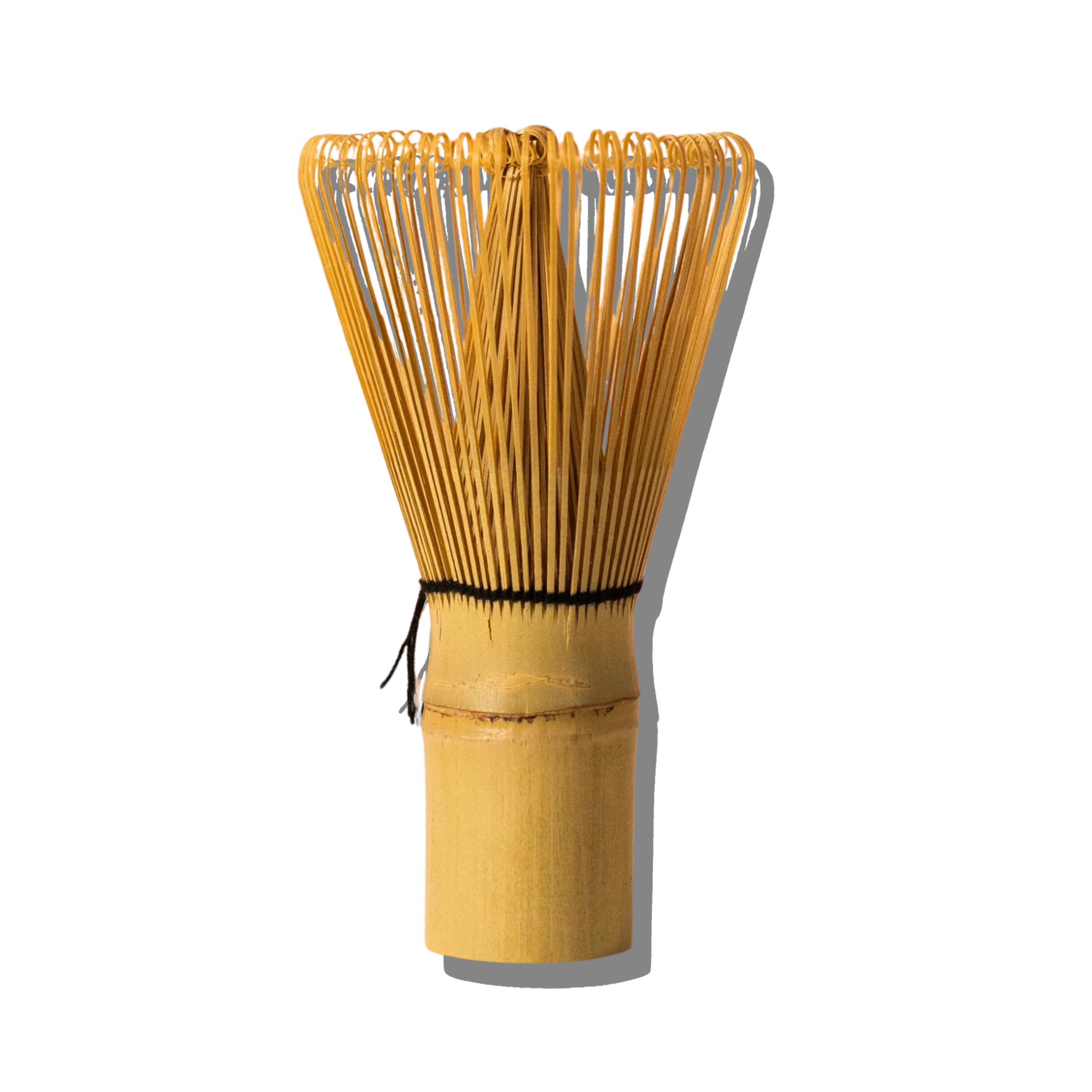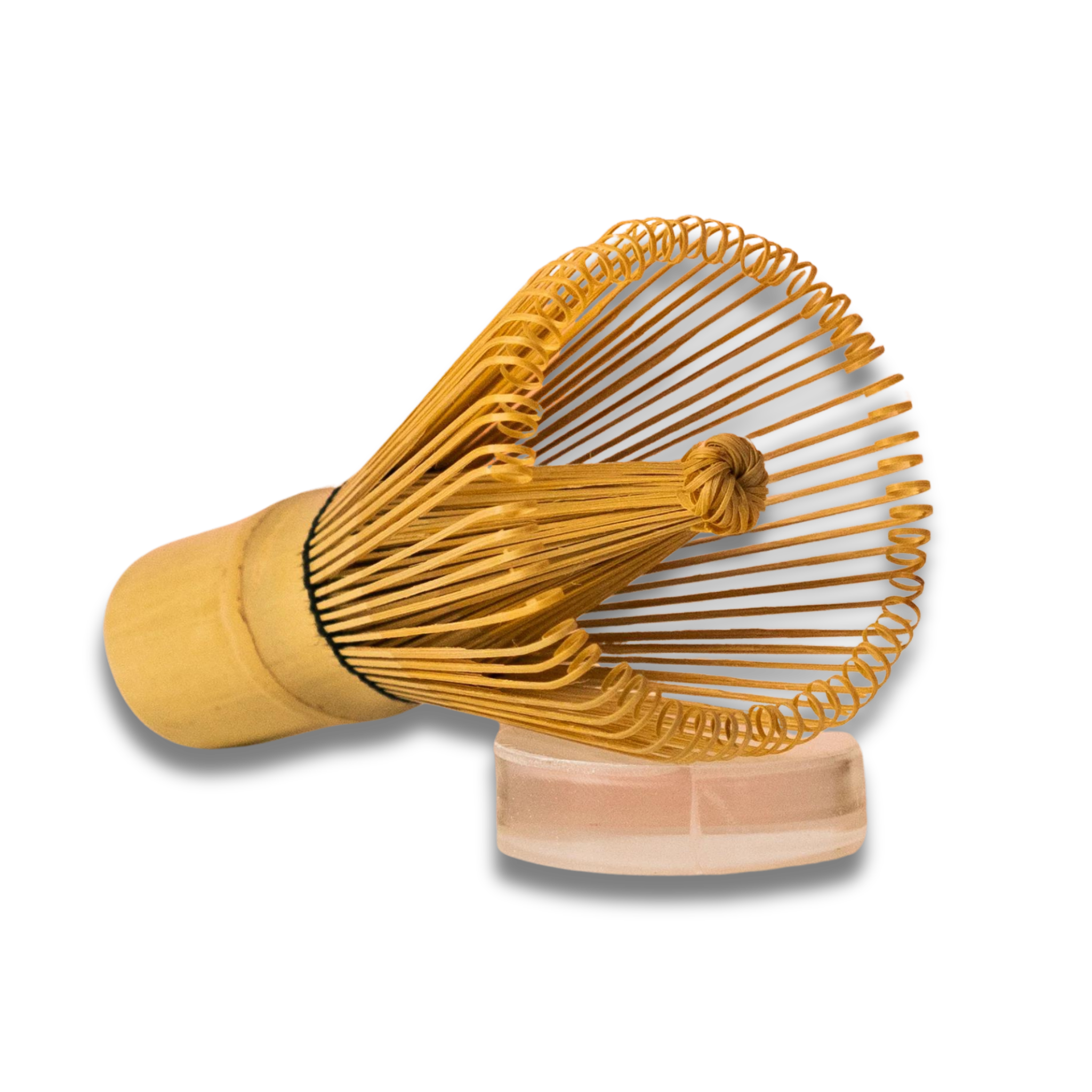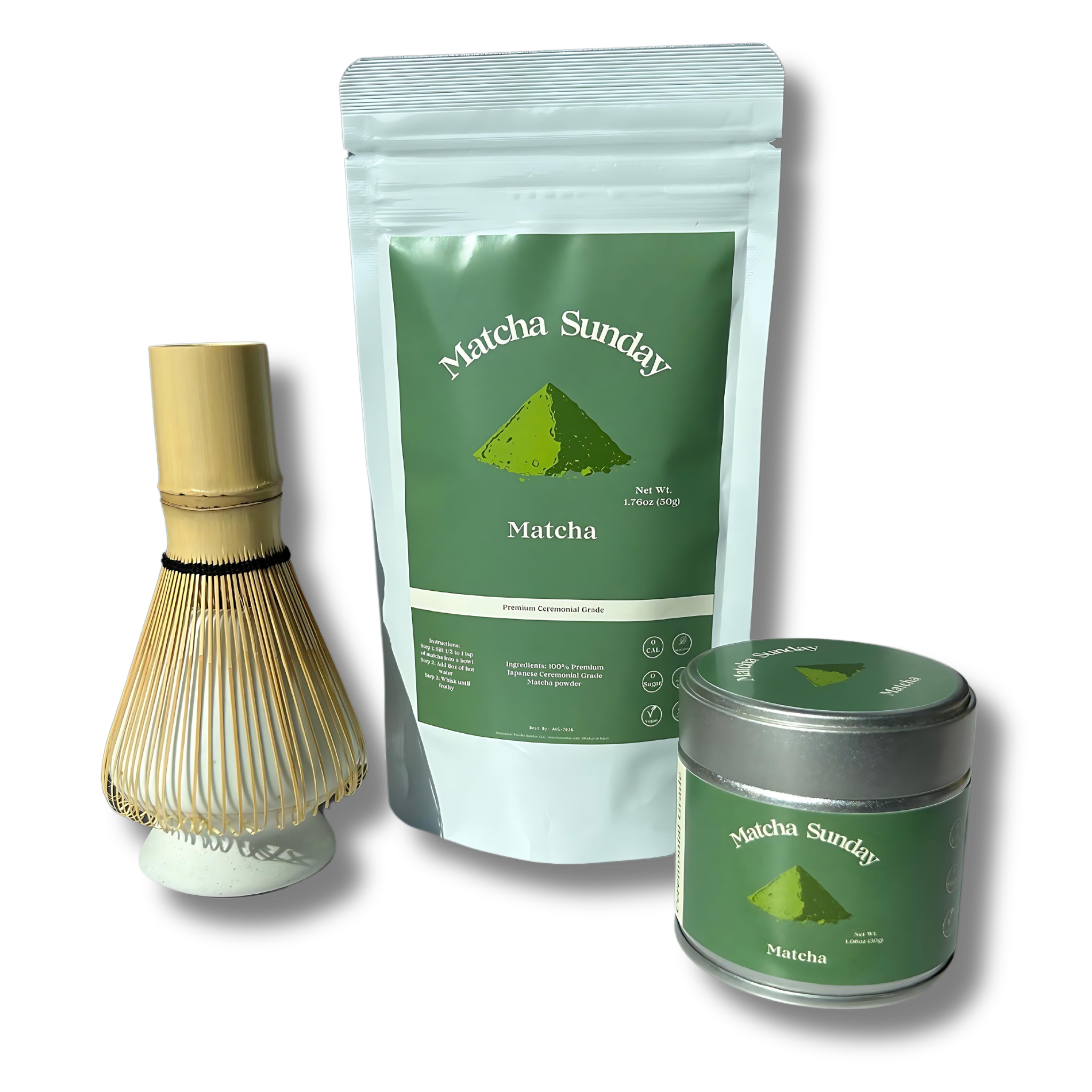Matcha caffeine feels different. It lifts without the spike. It grounds without the crash. For many, that’s the reason the green ritual replaces the morning jolt.
We crave energy that doesn’t fray our nerves. Focus that lasts without a second cup. A ritual that tastes like calm. Matcha offers that balance, one whisk at a time.
Matcha Caffeine, Explained
Matcha isn’t brewed like coffee. You drink the whole leaf, finely stone-milled, suspended in water. That changes everything about how caffeine lands in your body.
L-theanine, a naturally occurring amino acid in shade-grown tea, is the quiet hero. Studies suggest it smooths the caffeine curve, supporting alpha brain waves tied to focus and calm. Depending on grade, matcha can carry more L-theanine than typical green tea.
Why It Matters
Energy isn’t just about more. It’s about steady. Jitter-free alertness means you stay present in work, conversation, and training. Your energy becomes a tool, not a tug.
The Science Behind Calm Energy
Caffeine blocks adenosine receptors, delaying fatigue. In coffee, that can mean a quick ascent, then a valley. With matcha, L-theanine likely softens the climb and extends the glide.
Studies suggest the combination supports attention, reaction time, and a relaxed state. You feel awake and unruffled. Think smooth focus, not racing thoughts. This is not medical advice.
How Much Caffeine Is In Matcha?
Caffeine in matcha varies by cultivar, shade time, harvest, and grams used. A typical serving—about 1 to 2 grams—delivers roughly 60 to 80 milligrams. Depending on grade and preparation, some bowls edge higher.
A single espresso shot averages around 63 milligrams. A brewed coffee can range from 80 to 200 milligrams per cup. Matcha’s number is competitive, but the ride feels different.
A Quick Comparison
• Matcha: 60–80 mg per 1–2 g serving, slower-feeling lift, chlorophyll-rich, umami.
• Espresso: ~63 mg per 1 oz, fast hit, short half-life perception, bold and bitter.
• Brewed coffee: 80–200 mg per 8–12 oz, variable extraction, sharper peaks.
• Green tea (steeped): ~30 mg per 8 oz, gentler, leaf not consumed.
Timing Your Cup For All-Day Focus
The best energy respects your rhythm. Early light wakes cortisol, your natural morning spark. Matcha can gently layer on that momentum without shouting.
A late-morning bowl steadies the midday lull. An early afternoon iced latte can bridge creative work without sabotaging sleep. Most people should avoid caffeine after late afternoon.
Circadian-Friendly Timing
• Rise: Hydrate first, then matcha after a light bite to cushion absorption.
• Mid-morning: Anchor deep work with a hot bowl, paired with focused intent.
• Early afternoon: Go iced, smaller dose, to cruise without jitter.
• Evening: Choose ceremonial-grade sans caffeine? Try a ritual with warm water only.
How To Prepare Matcha For Steady Energy
The goal is clarity in the cup. Smooth, frothy, and vibrant green. Tools matter, but intention does too.
1. Warm your bowl and whisk with hot water, then dry thoroughly.
2. Sift 1–2 grams of ceremonial grade matcha into the bowl to prevent clumps.
3. Add 60–80 ml water at 70–80°C (160–175°F). Never boiling.
4. Whisk in a quick W-motion with your bamboo whisk until fine foam forms.
5. Taste. Adjust water for strength or add a splash more for a longer sip.
6. For a latte, top with warm, micro-foamed milk of choice.
7. For iced, shake with cool water, pour over ice, then add chilled milk if desired.
Why This Works
Sifting makes the texture cloud-like. Water below boiling preserves sweetness, aroma, and L-theanine’s gentle edge. The W-whisk creates microbubbles that carry aroma to your senses.
Ceremonial grade brings sweetness and umami. Lower grades can taste astringent when used straight. Choose quality for clarity.
Common Mistakes To Avoid
• Using boiling water, which scorches flavor and dulls the color.
• Skipping the sift, leaving clumps and uneven extraction.
• Over-dosing powder, causing bitterness and a wired feeling.
• Choosing low-grade culinary matcha for drinking straight.
• Adding excessive sweeteners that mask nuance and muddy energy.
• Storing matcha warm or unsealed, speeding oxidation.
Dialing In Your Dose
Caffeine sensitivity varies. Start with 1 gram if you’re new, then nudge up. Notice how your body and breath respond in the hour after sipping.
A kitchen scale is ideal, but a half-teaspoon can approximate one gram. If you’re coming from heavy coffee, don’t simply double matcha. Let your system recalibrate.
Start With Less
Steady energy begins with trust. Less can be more when your nervous system isn’t jolted. Give subtlety a week—it often wins long term.
Storage And Freshness For Consistent Flavor
Matcha is sensitive to air, light, and heat. Store it airtight, in opaque packaging, chilled if possible. Opened tins are best within 30–60 days for peak aroma and color.
A fresh powder looks vivid spring green, not olive. It smells like ocean breeze, fresh grass, and cocoa. Stale matcha turns flat and bitter.
Freshness Signals
• Color: Bright, electric green indicates quality and care.
• Aroma: Sweet, marine, and creamy—never dusty or dull.
• Texture: Silky, not gritty; it should cling lightly to fingers.
• Flavor: Umami-forward, not aggressively bitter.
Sustainability And Quality Factors
Shade-grown tea develops more chlorophyll and L-theanine. Skilled farmers net the tea fields for weeks, creating that verdant intensity. Quality isn’t just taste; it’s time, terroir, and craft.
Organic practices reduce pesticide exposure and protect soil health. Thoughtful packaging limits light and air, extending freshness. Choosing better helps your body and the planet.
Better For You, Better For The Planet
• Ceremonial grade for sipping; culinary grade for baking and blends.
• Organic and shade-grown when possible.
• Single-origin lots show character; blends offer consistency.
• Buy smaller amounts more often to keep it fresh.
Iced And Latte Variations Without The Crash
Cold matcha highlights sweetness and texture. Shake with cool water to preserve aromatics, then pour over clear ice. Add chilled milk to create a cloud-soft latte with layered green swirls.
Oat, almond, and macadamia milks bring different finishes. Oat is creamy and round. Almond is lighter, slightly nutty. Macadamia feels luxurious and silky.
Feel-Good Foam
Micro-foam matters in lattes. Froth milk gently to small bubbles, not giant suds. You want a satin texture that floats atop the matcha like sea foam.
Sweeten lightly if you must. Maple, honey, or date syrup complement umami without overpowering. Let green lead.
Brewing Without A Whisk
No chasen? No problem. Use a small jar or shaker bottle with a metal spring ball. Add matcha and cool water, then shake vigorously for 15–20 seconds.
You can also use a handheld frother. Keep the head submerged to avoid splatter. Short bursts build velvety texture quickly.
Portable Ritual
Matcha travels beautifully. Pack a small tin, a scoop, and a compact frother. A thermos of warm, not boiling, water turns any hotel room into a quiet tea bar.
On flights, ask for warm water and avoid boiling temperatures. Prepare a smaller serving to respect altitude dehydration. Your ritual becomes a compass.
Why Ritual Shapes Energy
Your nervous system pays attention to pattern. A measured, sensory routine signals safety, which helps the body receive caffeine more gently. Aroma, texture, and sound set the stage for focus.
Slow down for 60 seconds. Watch the powder bloom into jade. Breathe and sip. Energy follows attention.
Pairing Matcha With Food
A small snack can make your matcha feel smoother. Try a banana, yogurt, or a buttered slice of sourdough to buffer the stomach. Protein and healthy fats extend satiety.
Vitamin C-rich foods may brighten perceived flavor. Think citrus alongside a midday iced matcha. If you’re sensitive to caffeine on an empty stomach, eat first.
Gentle On The Stomach
Compared with coffee, many find matcha gentler. Less acidity. Fewer harsh oils. The result is clean energy without the acid burn.
Hydration matters, too. Follow your matcha with water, especially after workouts or travel. Your mind and skin will thank you.
Energy For Deep Work
Matcha’s calm alertness suits creative bursts and long focus blocks. Many creators use a 90-minute sprint after a bowl, then break. The energy holds steady, like a dimmer rather than a switch.
Studies suggest L-theanine and caffeine together support attention and reaction without overstimulation. Your brain feels both present and playful. That’s a rare sweet spot.
Pre-Workout And Recovery
Some athletes turn to matcha 30–45 minutes pre-training. The lift is smooth. The mind stays clear for form and pacing.
Post-workout, iced matcha with a splash of milk can be refreshing. Add a light snack to support recovery. Keep it simple and green.
Respect Your Cutoff Time
Caffeine’s half-life is roughly 4–6 hours, but it varies widely. If sleep is sacred, set an afternoon cutoff. Many thrive with a last cup before 2 p.m.
Track your evening wind-down. If you’re still wired, move your matcha earlier or reduce grams. Energy is a practice, not a fixed rule.
Tasting Notes: Training Your Palate
High-grade matcha tastes layered. Sweet cream, steamed greens, toasted nori, white chocolate, and a whisper of floral. The finish is long and smoothing.
If your cup tastes harsh, adjust. Lower your water temperature, sift finer, or use slightly less powder. Quality matters most—great powder forgives small errors.
Water Quality Makes A Difference
Use filtered, low-mineral water to let matcha sing. Hard water flattens aroma and thickens the body unhelpfully. Softer water yields clearer foam and a sweeter finish.
Heat gently. Stop before boiling. Water that’s too hot mutes the music.
Caffeine Sensitivity And Personalization
Everyone metabolizes caffeine differently. Genetics, sleep, and stress all play roles. Some feel wonderful at 80 milligrams; others prefer 40.
Consider half-servings or a split-day approach. A small morning bowl, then a tiny afternoon iced. Let your nervous system lead the conversation.
A Simple Daily Framework
Keep it easy. Matcha asks for consistency, not perfection. Small rituals compound into clear days.
1. Wake and hydrate.
2. Light breakfast.
3. Prepare a 1–1.5 g matcha, sit, and sip.
4. Begin your focus block.
5. Optional small iced matcha early afternoon.
6. Water, movement, and sunlight between tasks.
7. Evening wind-down without screens.
Designing Your Setup
Create a small corner just for tea. Bowl, whisk, scoop, and tin, arranged with intention. A clean, beautiful space invites daily practice.
Choose tools you’ll love to use. A bamboo whisk is gentle and effective. A glass tumbler shows the green swirl. Beauty supports habit.
Culinary vs Ceremonial: Energy And Experience
Ceremonial grade is intended for drinking straight—sweeter, smoother, and vibrant. Culinary grade is built for mixing and baking—more robust, slightly bitter.
For calm energy and pure flavor, sip ceremonial. For smoothies, cookies, or lattes with stronger flavors, culinary works well. Use the right tool for the task.
Sugar, Sweeteners, And The Curve
Sweetness softens edges but can spike and dip energy. If you add sweetener, use less than you think. Let matcha lead, not sugar.
Try spices instead of sweet. Vanilla, cinnamon, or a pinch of cardamom add warmth and depth. Your cup stays elegant and balanced.
Foam Art, Mood Art
A gentle froth isn’t just pretty. It disperses aroma and texture evenly. Your first sip matches your last.
Practice a light, quick whisk. You’re not mixing a batter; you’re painting green silk. The surface should glow.
A Note On Decaf And Late Rituals
Some evenings call for the motion without the caffeine. Whisk ceremonial-grade with warm water for a minimalist tea-water, no steep. It’s aromatic and grounding.
You can also take the ritual to food. Sprinkle a micro pinch onto yogurt or fruit. The color alone calms.
If You’re Coming From Coffee
Don’t white-knuckle the transition. Replace one coffee with matcha for a week. Notice focus, mood, and sleep.
If you miss the heft, go for a matcha latte with micro-foam. If you miss the speed, whisk a smaller, stronger bowl. Adapt, don’t abandon.
Eco Considerations
Matcha is concentrated; a little goes far. Choose brands committed to responsible sourcing, packaging, and fair practices. Premium doesn’t just taste better—it behaves better.
Finish your tins before opening new ones. Freshness is a form of sustainability. Waste less, enjoy more.
Common Questions, Quick Answers
• Will matcha break a fast? Pure matcha has minimal calories, but it may break a strict fast.
• Is matcha dehydrating? Tea is mildly diuretic, but the water content offsets it for most.
• Can I drink it on an empty stomach? Many can, some prefer a snack first—listen to your body.
• Is there fluoride? Tea plants can accumulate minerals; choose quality sources.
Your Daily Green Pause
In the end, it’s about feeling how you want to feel. Clear, steady, and quietly energized. The color lifts the eyes, the aroma smooths the breath, and the ritual sets the tone.
Matcha doesn’t demand. It invites. One bowl, one breath, one bright morning at a time.
Key Takeaways
• Matcha’s caffeine rides smoother due to L-theanine and whole-leaf consumption.
• Dose gently—1 to 2 grams—then personalize based on sensitivity.
• Water temperature matters: 70–80°C preserves sweetness and calm energy.
• Store airtight and cool; finish opened tins within 30–60 days.
• Ceremonial grade for sipping; culinary for mixing and baking.
• Time your cup earlier in the day to protect sleep.
• Tools help, but intention shapes the experience.
For Your Ritual
If you’re ready to feel the green difference, start with Ceremonial Grade Matcha and a Bamboo Whisk. Add a simple sifter, a favorite bowl, and a quiet minute. Your energy will follow the care you pour into the cup.



